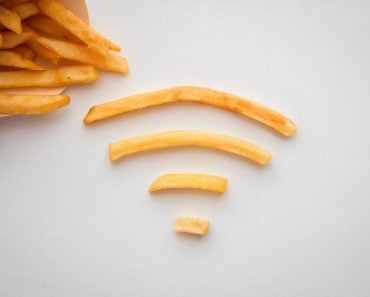Table of Contents (click to expand)
Whatsapp works well, even with poor internet connetcivity, because it compresses data with little to no loss of information before transmitting it.
Few brands become so synonymous with the products they make that they become the product themselves! Don’t know what I mean? Consider the case of Xerox. How many times have you caught yourself asking for a Xerox, instead of a photocopy?

A similar product making waves in the software industry is WhatsApp, an instant messaging (IM) platform. Chances are that you’ve not heard of IM, but you’ve almost certainly heard of WhatsApp. It has radically changed the way we communicate. Single-handedly obliterating SMS and complex video conferencing tools, it threatens to hand the same fate to emails someday soon.
What goes into making this 2.4 billion-user application so revolutionary and omnipresent? Let’s find out!
Recommended Video for you:
Why Can WhatsApp Work Even With Poor Internet?
The key to Whatsapp’s massive success lies in its simplicity of use and ability to work even under poor internet conditions. In doing so, it has established a league of its own, surpassing not only conventional systems like SMS, but also other IM platforms.

Simple features like blue ticks for message acknowledgement, document-sharing and even secure payment gateways make WhatsApp a very convenient and powerful tool to have by your side. Concurrently, it performs well even with sketchy internet.
As we already know, all forms of electronic communication are a transaction of packets of information through designated channels. WhatsApp is designed to compress these packets for easier transmission, even with poor internet connectivity. To achieve this, WhatsApp has several elements built into its code.
Optimization For Various Bandwidths
WhatsApp is optimized to work on all currently prevailing bandwidths, namely 3G, 4G and 5G. The transmission rates of messages from WhatsApp are directly related to the speed of the available internet connection.
However, network strength does not remain constant in all parts of the world. Chances are that you might even encounter 2G internet speeds in some areas. In such events, small packets of information, such as texts, may be prioritized over bigger ones, such as media files.

Try this for yourself… When stuck with poor internet connectivity, try sending your WhatsApp contacts a media (image, video, file etc.) followed by a text message. You will find that the text message gets delivered while the media is getting uploaded in the background.
This is because Whatsapp enables smaller sized packets of information such as text to be transmitted in poor internet conditions. While WhatsApp typically follows a first-in first-out sequence, it overrides this to adjust for poor network conditions.
Adaptive Bitrate Streaming
Similar to message delivery prioritization, adaptive bit rate streaming is WhatsApp’s way of optimizing videos on a poor network connection. Like Youtube and other video-sharing platforms, WhatsApp does not require the whole video to be downloaded in order to be played.

The beginning is streamed, wherein the later parts of the video get downloaded in the background while you watch the initial parts. When suffering from poor internet, WhatsApp is designed to reduce video quality, rather than stopping it from playing altogether. This feature, known as adaptive bit-rate streaming, is a great way to keep WhatsApp working, even in poor internet conditions.
Data Compression Protocols
WhatsApp has various techniques to compress all types of information it transmits, namely text, images, audios and videos. These techniques are a combination of measures in which some data is permanently lost (lossy techniques), or compressed (lossless techniques), to reduce file size.
Lossy compression techniques cause several perceptible differences, such as loss of image clarity and a reduction in resolution. However, they also bring about imperceptible changes, such as the removal of metadata and even high-frequency data, such as color variations, background noise and other imperfections
Lossless compression, on the other hand, is slightly more complicated, in that it seeks to reduce file size without any actual loss of data. To do this, it scouts for redundancies in the data and replaces it with a single unit of representation. All data points with identical information are now represented by this single unit, as opposed to restating all of the information. This technique, known as referencing, is a great way to compact a file without losing essential information.

WhatsApp also puts a limit on the size of documents and videos that can be shared, further reducing bandwidth, and consequently, the time consumed to send them across. Lossy techniques achieve higher data compression in comparison to lossless techniques. Their downside is that they directly and perceptibly result in the deterioration of media quality.
Here’s how you can take advantage of this. Some websites put a cap on the size of media that can be uploaded. Common examples include banking, government, job and university application portals.
It is quite easy to not pre-empt for such situations, requiring a last-minute dash to online compression tools. Using WhatsApp, however, you can share the desired file with a trusted contact, or even yourself. The shared file is a compressed version of the original and invariably suffices for all your compression needs!
Online And Offline Data Caching
To ensure that the data transacted is available to users at all times, WhatsApp stores data both locally and on its servers. This presents a twofold advantage. Online storage prevents local storage consumption, while offline storage ensures that useful information is available to the user at all times.
Commonly cached information includes chats, media and profile pictures that are stored both locally and online. Whenever a secure, high-strength connection is established, WhatsApp updates this cache only with the latest information. This technique, known as differential data transfer, allows WhatsApp to keep updated records at all times, without consuming a lot of data.

Thus, WhatsApp is designed to operate at the confluence of conflict: Good and Bad internet, Online and offline storage, constant connectivity and reduced data consumption. Having the above-mentioned protocols, along with privacy add-ons like end-to-end encryption, make WhatsApp a great tool to have in your toolkit.
Future Of WhatsApp And Instant Messaging – A Parting Note
Notoriously unadorned by extraneous and often unnecessary features, WhatsApp offers a very convenient way to communicate. Furthermore, it offers end-to-end encryption to ward off any prying eyes from accessing sensitive information. Yet, WhatsApp’s data privacy is questionable, putting it at significant disadvantage in comparison to other IM platforms.
Whether we shall find a competitor that does everything better than WhatsApp is hard to say. It’s only a matter of time before instant messaging platforms serve all other cumbersome communication tools an eviction notice!
References (click to expand)
- K Vos —. The Opus Codec. jmvalin.ca
- A Rämö. (2011) Voice Quality Characterization of IETF Opus Codec. International Speech Communication Association
- Comparative Study of Data Compression Techniques. ijcaonline.org
- file structure analysis of media files sent and received over. University of Colorado Denver












